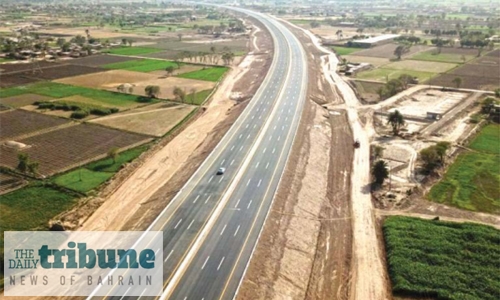Economic revival plan
Recent trends in Pakistan have given Prime Minister Imran Khan reason to claim that an economic recovery is spreading across the South Asian country. “Pakistan’s economy finally heading in right direction, as more of our economic reforms bear fruit,” Khan tweeted recently following a slight improvement in the current-account deficit, and the International Monetary Fund’s approval of an approximately $500 million loan that is part of a larger $6 billion package agreed in July.
Recently, Moody’s Investors Service, a global ratings agency, raised Pakistan’s sovereign debt rating outlook to stable from negative, taking note of stronger economic indicators. The country’s benchmark KSE100 stock index has risen almost 40 per cent since August in response to Moody’s upgrade and growing confidence over Pakistan’s ability to meet its foreign debt payments after it signed the IMF loan.
Finance Ministry officials in Islamabad say that Pakistan is looking to return to global bond markets in the first half of 2020 with offers like the sukuk, an Islamic bond, worth at least $1 billion. Another noticeable trend has been a surge in foreign investors’ interest in Pakistan’s domestic rupee bond market. Debt investors are attracted by the country’s high interest rates, with the State Bank of Pakistan nearly doubling its policy rate over the past two years. Since July, investors have bought up to $1 billion in rupee-denominated government bonds.
Another $2 billion in bond purchases is expected through June 2020, according to estimates by Topline Securities, a Karachi-based investment advisory service. “The stability of the rupee, and the central bank maintaining high interest rates, is prioritising the interests of foreign fund managers,” said Mushtaq Khan, a former economic adviser to the central bank. The government has also made boosting the infrastructure of the country a top priority.
China, Pakistan Economic Corridor (CPEC) is key to Pakistan’s yearn for achieving sustainable growth that has already transformed the violence-hit country into an emerging economic giant. The successful recent meeting of 9th Joint Cooperation Committee (JCC) of the CPEC helped the country take another leap towards its goal of gaining economic reliance as the officials of both China and Pakistan reiterated their commitment for progress on ongoing and planned projects under CPEC.
The Chinese delegation at the 9th JCC was the biggest in number as compared to previous delegations which shows commitment of China to take cooperation with Pakistan to new highs. Both the countries made significant development on the proposals forwarded by six Joint Working Groups, which included the industrial cooperation, transfer of technology and cooperation in agricultural, mineral, oil and gas and steel sectors.
The major development in the 9th JCC was related to the much-awaited mega railway infrastructure project, ML-I, which is likely to see practical development within the next 3 to 6 months. ML-I project is to facilitate smooth movement of passenger and cargo trains at a fast pace cutting distance from Lahore to Karachi from 26 hours to approximately 12 hours, bringing in a transformation to the country’s ailing railway system.
The recently formed CPEC Authority would provide one-window for all CPEC related projects putting them on a fast pace and remove all procedural bottlenecks and bureaucratic hurdles. The government also plans to build the remaining portion of the eastern corridor of CPEC from Sukkur to Hyderabad (M6) in Build-Operate & Transfer (BoT) mode under the umbrella of Public-Private Partnership with a Chinese company
Related Posts

